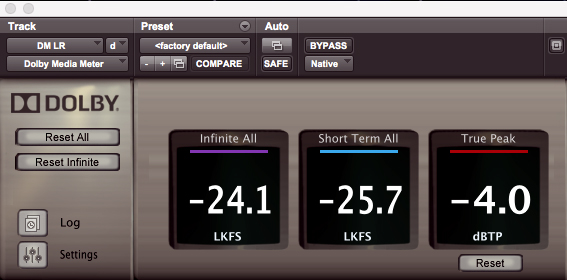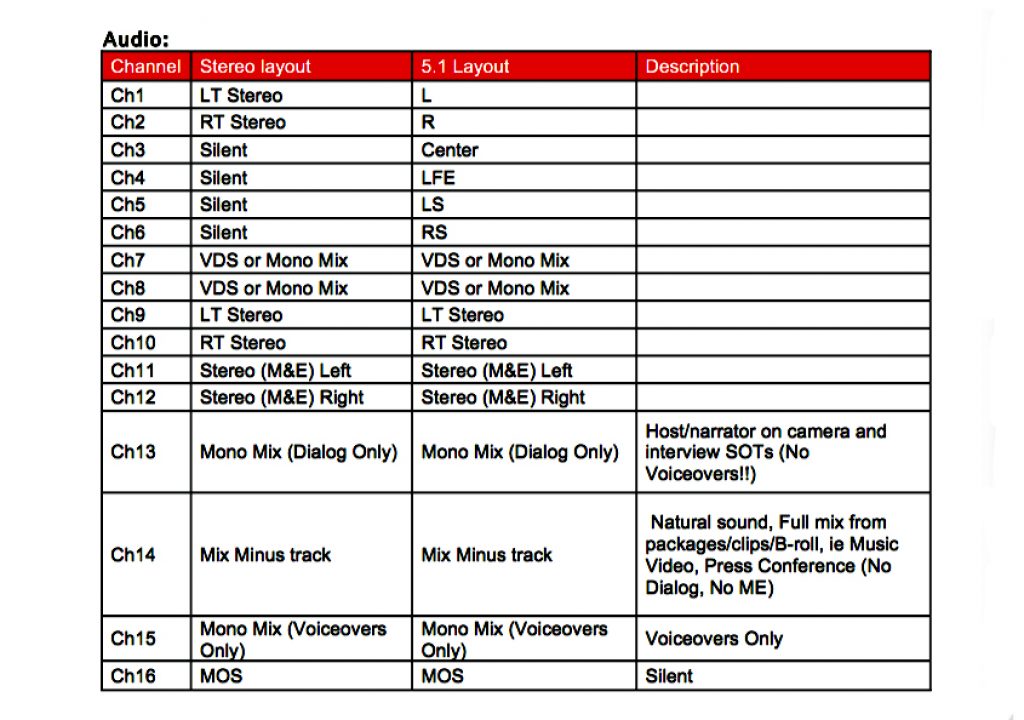
Editor’s Note: “28 Weeks of Post Audio” originally ran over the course of 28 weeks starting in November of 2016. Given the renewed focus on the importance of audio for productions of all types, PVC has decided to republish it as a daily series this month along with a new entry from Woody at the end. You can check out the entire series here, and also use the #MixingMondays hashtag to send us feedback about some brand new audio content.
Quality control, often referred to simply as QC, is an extremely important process in every step of post-production. For audio, the mix needs to meet the technical quality of what you are delivering – creating a great sounding, immersive mix, making sure the audio stays on spec with the indicated delivery measurements and output requirements, and is free of distortion, clicks and artifacts. From there however, there might be many different QC steps depending on the content – feature film, television program, multimedia or web.
There are as many audio delivery types as there are broadcasters or distributors. QC criteria is not an artistic or creative evaluation of the mix, the QC department will verify that the loudness standards and that the delivered sub mixes or stems have been correctly prepared. From delivery to delivery the audio output requirements can be all over the map. The delivery doc will hold the keys to what specific needs for the audio there are to be prepared.

A key audio measurement for television QC is the LKFS reading. I’ve discussed this at length here. In its simplest terms, the mandated standard for US television is a measure of -24 db LKFS. The implementation of that varies wildly from distributor to distributor. Since audio levels constantly fluctuate, what can vary in this specification is the leeway to that -24 db number. In most cases it is plus or minus 2db, in some cases it is plus or minus 1db. So that means the reading can fall between -22db to -26db on a LKFS meter.
Another key measurement for television QC are the average levels and the peak levels. Digital audio peaks can be expressed in sample peak or in true peak. Many picture editing programs have sample peak meters as their built-in meters. Often quality meters that measure true peak and LKFS are an additional cost as a third party plug-in. There can be up to a 3db difference between the readings of sample peak versus true peak meter. Always make sure to use the correct meters to meet the delivery requirements.
The average audio levels are typically described as a range. In the US, the calibration standard is -20db. Typically, the head of the recordings will have a 1KHz reference tone play at -20db with the slate, before the program start.

The dynamic range of the allowable mix will be determined by the peak requirement as well as the average requirement. For instance, if the average program level is -20db and the true peak is -10db, then you have ten decibels of headroom for loud moments. However, if the true peak output is set to -2db, and the average level is -20db, then you have -18db of headroom giving a nice opportunity for much more dynamics in the overall mix.
The QC at a network or distributor will then verify that the delivered audio mixes and stems conform to the specifications. The QC process will look at all of the delivered stems to be sure the proper elements are on the proper stems. It will be checked for LKFS compliance, average and true peak level requirements. It will be checked for any audio anomalies such as drop-outs, pops, ticks or any sort of audio artifact.
Also, besides the technical examination, there are other actual delivery requirements which will be checked. This would include the proper split tracks, mixed according to the delivery requirements. I have a post on that here. Also imperative, is providing the correct nomenclature naming convention of the tracks themselves, proper reference tones, time coded sync pops and track metadata.
In a typical QC workflow for deliveries from my company Allied Post Audio, there are a couple of stages of QC. There will be my own and my team’s scrutiny prior to delivery to be sure the mix sounds great, is clean of artifacts and has all of the correct stems or sub-mixes required. I have lots of first-hand experience of what I call the “voodoo” of digital audio – exports with mysterious pops, clicks and weird anomalies. It is imperative that prior to mixes sent out of house that they are QC’d with a highly critical ear.
From there it will be QC’d by the production company. These are typically done out of house, by a QC service. With that report back, there may be a few final thoughts or questions on their end regarding the mastered mix, when watched with the colored and mastered video file. Finally, the fully mastered movie or program is delivered to the network or distributor for their QC. This process might incur one final pass for delivery and payment. Network notes are typically of an affirmation on things like – “was this the best location audio available”, “is this voice-over or dialog audio”, “is this a digital hit (or distortion, or static…) or is it part of the music track?”, those sorts of questions. Once those are addressed then it’s either a redelivery with their notes addressed or a final sign off.
In Pro Tools, the DAW that I use, I mix with all of the relevant meters up, so I can watch the measurements as I work through the show. I will create the show, typically unsupervised, according to the required specs. I will route the various tracks to create the stems needed and I will monitor the mix as I go, checking levels on the various meters every step of the way. Then I will work on the show, making it sound as I great as I can, all within spec, to prepare for the mix review with the client.
On a typical client review day, I will review the show just prior to the client coming and make my own final adjustments. I will then review the show with the client, act by act and change, fix and alter the work to reflect what they would like the final mix to be. Once they sign off on the final mix and leave, I will prepare the mix and stem delivery, and I will review this new final mix one last time before it leaves the bay. This will be a QC pass of the final recording that will be delivered. This is more of a technical pass since the producers have come and made their final choices on the sound edit and the final mix, so I would not be making any changes on that level. This will be the final chance, before delivery, to address any random clicks, ticks or pops or sync issues while listening through the recorded stems.
In my experience there is no “later” when delivering. Of course, any issues that arise will be flagged and will need to be addressed and then the mixes will need to be redelivered. But it is imperative to be sure that all of the specifications have been met after the client signs off on the mix and prior to delivery to the production company and ultimately to network or distribution. It’s a happy day when the word arrives that the network or distributor has signed off on the delivery.
This series, 28 Weeks of Audio, is dedicated to discussing various aspects of post production audio using the hashtag #MixingMondays. You can check out the entire series here.
Woody Woodhall is a supervising sound editor and rerecording mixer and a Founder of Los Angeles Post Production Group. You can follow him on twitter at @Woody_Woodhall


